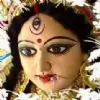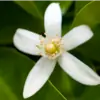Daksha Prajpati Mandir
Kankhal- Place of Sati Immolation
Haridwar is one of the most ancient cities in the world. Its original name was Mayapuri and it is mentioned in all our ancient Vedas and Puranas. The small town of Kankhal is very close to Haridwar and it has a beautiful temple to Shiva which is known as the Daksha Prajapati Mandir. The temple itself is not that old but the yajnashala or place where yajnas (fire sacrifices) are conducted is very old and it has been confirmed as the place in which the original Sati gave up her life for the sake of her husband who had been insulted by her father. Kankhal is the place where Sati's father who was one of the patriarchs of the ancient world had his capital and performed a famous yajna or sacrifice many hundreds of years ago. This yajna was obviously a very important one since it is mentioned in all our Puranas.
Sati Yajnashala at Daksha Prajpati Mandir
The legend of the goddess Sati, first wife of Shiva is one which has enthralled and inspired Indian women through the ages. She was the youngest daughter of the famous Prajapati or patriarch known as Daksha. His kingdom was in Kankhal, near modern Haridwar. From the time she was born her mind was completely dedicated to Lord Shiva. However her father was totally against such a bridegroom for his beloved daughter. Shiva, clad in tiger skin with snakes round his neck and smeared with ashes from the cremation ground was hardly a fitting son-in-law for him and Daksha swore that he would never let his beautiful daughter wed such a man. However, Sati was adamant and refused all other offers of marriage and devoted her time in doing tapas to Shiva. At last her austerities bore fruit and Shiva, who was a born recluse decided to accept her in marriage. At the end of her year-long penance, Shiva approached her and blessed her. He knew what was in her mind and held out his hand and asked her to accompany him. Shiva's ways were always unconventional! She begged him to first ask her father's permission. Shiva knew that Daksha who was the impeccable priest of orthodoxy would never agree to a union between them; however since she was insistent he caught hold of her hand and took her to her father's court.
Daksha looked at Shiva in disgust and shouted, "You scoundrel! What have you done? Are you trying to snatch my beloved daughter from me?" Turning to Sati he roared, "I will never let you marry this wretch!"
Sati spoke vehemently, "Father I have made my choice. This is the man I want to marry. I will wed none other."
Daksha exploded, "In that case you can marry him without my consent and without my blessings. You will be shunned forever, condemned to wander like an outcaste with this madman!" Sati said not a word but clung harder to Shiva's arm. He lifted her in his arms and placed her on his vehicle ' the bull, Nandi who had been patiently waiting for his master's command. The couple set off without any of the pomp or show which befitted the daughter of a patriarch. There was no priest or rituals which were so dear to Daksha's heart and no music or trumpets!
Sati did not care. She was prepared to sacrifice all her comforts for the sake of her beloved Lord. Shiva took her to the bleak and barren mountain where there were only beasts and reptiles to welcome her. Sati was content to roam wildly in the wake of her unpredictable husband across the desolate Himalayan ranges and peaks, inhabited by wild animals. Thus they lived for many years and Shiva taught her many of the esoteric secrets of life known only to him. These teachings form the basis of all the abstruse cults found in the Hindu religion.
Once when she was wandering on the hillside she noticed many aerial vehicles passing above. Some of them contained her sisters and their husbands. She called to them to find out where they were going. They said, "Don't you know that our father is celebrating the grand Brihaspati Yajna to which everyone who is anyone has been invited. It is going to be the greatest show in the world. We are sure you will get an invitation soon and we will all meet at our father's house." Sati ran to Shiva and asked if they had received an invitation.
"Shiva replied, "Don't you know that your father hates me? He is conducting this Yajna with the express purpose of humiliating me and will certainly not invite us."
Sati was crestfallen when she heard this. She thought for a while and said, "Of course you cannot go to a place where you have not been invited but I'm his daughter and can go to her father's house without an invitation. I would love to meet my mother and sisters so please let me go." Shiva said, "I cannot stop you from doing what you want Sati, but let me warn you that no good will come of it. You will dishonoured and forced to listen to your father's insults."
Daksha Prajpati Mandir
But Sati was adamant. She had made up her mind and nothing he said could stop her. Sadly Shiva watched her depart. He sent Nandi to carry her and all his goblins accompanied her to protect her if necessary. She set out with great enthusiasm. She wore pomegranate flowers in her hair and her pet parrot sat beside her on the bull. The white umbrella of royalty was held above her and banners and pennants waved merrily beside her. Trumpets and conchs blared as she set out with right royal regalia. Shiva watched her go with great sorrow for he knew that he would never see her in this form again.
Sati came from the realms of established religion, the order of dharma and the maintenance of the world order. She had married into the order of asceticism and strived to combine these two opposing worlds, both of which are basic to Hindu tradition. In the end she was forced to make the final sacrifice of her own life.
Sati could hardly recognize her home when she reached. Everything was decorated in a spectacular manner. She descended from the bull and went inside alone. The ganas waited outside in trepidation. As Sati entered the sacrificial hall, none dared to look at her for fear of Daksha. Only her mother and sisters flocked to welcome her but she waved them aside. Daksha alone was totally unaware of her entrance since he was immersed in his rituals. Her trained eye noted that offerings and places had been kept for all the gods except Shiva. His place was deliberately kept empty and bare. With measured steps she walked towards the centre of the Yajnashala (sacrificial hall) where her father was seated before the blazing fire, offering ghee and various other herbs into the pit, muttering incantations all the while. Everyone watched with bated breath while she approached.
Her complexion which was normally dark became even darker. Her long black tresses which had been knotted up were shaken loose and swung like a black cloak around her. Her lotus eyes were red with anger and blazed like hot coals, and as she glared at her father, sparks like embers flew out. Daksha turned and saw her and visibly paled beneath her scorching gaze. It was the first time that Daksha had broken off his mutterings in the middle of a ritual.
Ancient Banyan at Sati Yajnashala at Daksha Prajpati Mandir
Sati looked at him with scorn and said, "O father! Your end is near. You are trying to perform a sacrifice without inviting the One who is the very soul of all sacrifices. Shiva is the essence of fullness and you have excluded him from your yajna. You think the world revolves round your rituals but even the flowers you use are but the rain which falls from the feet of Shiva. You have deliberately insulted him, the great Lord ' Mahadeva, without whose blessings no yajna can be complete. My Lord warned me of what I would find here but I disregarded him. How can I return to him? I can no longer bear to have my beloved call me "Dakshayini", (daughter of Daksha). This body which was born from your seed is hateful to me. I can no longer inhabit it. Your daughter shall be the supreme human sacrifice for your great yajna. Here and now I shall abandon this body which has sprung from your loins!"
So saying, Sati turned towards the north and fixed her mind on her Lord. She covered herself with her upper garment and went into a trance. She raised her Kundalini Shakti from the Muladhara Chakra from the bottom of her spine to the Sahasrara Chakra on the crown of her head. Her spirit disappeared through the orifice at the crown of her head, leaving the empty calcified shell of her body standing like a translucent statue. Everyone gazed in awe at what remained of her body.
At that time an ethereal voice declared that Daksha's sacrifice was doomed. "Since Sati, the mother of the universe and Shiva, the father of the universe, were not propitiated by you, misfortune shall befall you!"
(As mentioned above the yajnashala of the present temple of Daksha Prajapati was the one where Sati gave up her life).
A raised arm on a tombstone indicates a Sati
The waiting ganas flew back to Shiva and reported the whole disastrous turn of events which had led to their mistress' death. Shiva jumped up from the rock on which he had been sitting and plucked off one of his braids and dashed it on the rock. Out of this sprang the gigantic figure known as Virabhadra. He had the same features, embellishments and attire as Rudra, the destroyer. He had hundreds of arms all brandishing a multitude of weapons. He was decked with snakes, and flower garlands. Shiva commanded him to proceed to Daksha's palace and destroy the entire sacrifice. He set out followed by Kaali and a host of goblins and spirits.
Far away in the yajnashala there was total silence and gloom. Daksha cowered in fear beside the fire. Into that silence crept a noise which grew and grew like the approach of an awesome tornado. It was inexorably approaching from the north. First of all a dust storm appeared out of nowhere and filled every nook and crevice of the hall. Then out of the gloom there appeared Virabhadra's mountainous figure with flailing arms and weapons, indiscriminately destroying every single thing in his way. Those who could flee ran for their lives, others had their limbs torn from them and still others were brutally trampled upon. The once beautiful yajnashala had become a battlefield soaked with blood and scattered with limbs. The ganas proceeded to desecrate the whole place that had been sanctified by the priests. They urinated in the hollows in which fires glowed and splattered blood on the offerings. Virabhadra looked around for the master of the sacrifice and at last spied him huddled in terror near the altar. His reached his hand and gripped him by the neck and hauled him off to the sacrificial pit where the animal sacrifice was normally carried out. He cut off Daksha's head and threw it contemptuously into the fire, the final offering ' the head of the master of the sacrifice!!
Having done his worst, Virabhadhra returned to his Lord along with the ganas. In the meantime Brahma and Vishnu went to Kailasa and begged Shiva to withdraw his form as Rudra and allow Daksha to complete the sacrifice which was meant for the well being of the world. Shiva agreed but since Daksha's body had no head, he told them to fix the head of a goat on his trunk and allow him to complete the sacrifice.
Though he had forgiven Daksha, Shiva was filled with agony at the death of his beloved, Sati. He went to the yajnashala and picking up her lifeless corpse, he wandered over the whole world, holding her aloft. His ganas followed him silently, tears rolling down their cheeks, not knowing how to console their grief-stricken Lord. He wandered on and on repeating the steps of the tandava, the dance that always preceded creation and destruction. The whole of creation was filled with grief and the gods begged Vishnu to do something before the whole world drowned in Shiva's sorrow. Vishnu followed Shiva and taking his discus he cut off pieces of Sati's body, limb by limb. At last when the whole body was gone, Shiva realized that there was nothing more in his arms. He retired to his mountain fastness and went into deep samadhi and refused to meet anyone.
Those places where Sati's limbs had fallen came to be known as Shakti Peethas, where the power of the divine mother was most keenly felt. These peethas are fifty-one in number though sometimes they are said to be a hundred-and-eight.
Sadhiora Sati Mata
In the years to come, the word "sati" came to be used for any woman who immolated herself on her husband's pyre. After some time the custom of commemorating the death of a "sati" with a memorial stone came into fashion. The earliest of these are found in Sagar, Madhya Pradesh, though the largest collections date from several centuries later, and are found in Rajasthan. These stones, called devli, or sati-stones, became shrines to the dead women, who were treated as objects of reverence and worship. In fact these women were worshipped as goddesses. They brought glory not only to their husbands but also to their families. They are most common in western India. They are also known as Maha-sati stones (hero-stones) and they were erected in memory of all those women who committed sati and are periodically worshipped. Many hero-stones claim that the wife has committed sati out of tremendous love for her husband, so that they could be together after death, but these are not historically substantiated. One finds a large number of women committing sati immediately after a war, when the women must have died to protect their honour from the invading enemies after their men had perished in the battlefield. During the time of the Rajputs in particular many women jumped into the fire along with their husband's body and came to be deified as "satis". This was most common during the time of the Moghuls when the women did not want to remain after their husband's death and lose their chastity.
Sati Marks (Maharaji Man Singh Widows)
I was never aware of the existence of these stones in Kankhal but a friend took me to see them. Apparently since the original Sati took place here, many of the relations of the satis brought their ashes and put them in a graveyard in Kankhal and placed the sati stone over them. There are many such places in Kankhal where you can see these stones but the one which impressed me most was a fairly large one filled with these stones. Even from afar the place had a gloomy and eerie look. It was surrounded by a broken wall and a huge banyan tree with amazingly knotted branches and roots spread its branches over the stones as if sheltering them with its arms. Silently I climbed up the steps and stepped into the hallowed ground encrusted with hundreds of years of fallen leaves since apparently no one ever came here any more. Not a sound was there in that place not even the chirping of a bird. I looked around curiously. Who were the women who lay here, I wondered and what had driven them to make this final sacrifice for their husbands? Was it love or compulsion or the horror of living the life of a widow? Perhaps they thought it better to be glorified as a goddess than ostracized by the society and living the life of a social outcaste. It was really a depressing place yet it was filled with some strange poetry. Were these women trying to reach me, since perhaps I was one of the few who dared or cared to go there after so many years of abandonment? How could I dare to desecrate this holy ground with my footwear? I thought of taking them out but prudence prevailed since the ground was damp and it was winter. I breathed a prayer for them ' those who had deliberately courted an agonizing death to be with their husbands in heaven. Evening shadows were falling and I took a last look at these forlorn stones some of them tilted and about to fall, some standing straight and proud, a monument to the women who had died for their husbands as Sati had died for the sake of her beloved Shiva!
Shiva's Grief
I returned to the temple of Daksha Prajapati and stood for a moment in front of the huge statue of Shiva carrying his beloved Sati in his arms, ranging the world in despair. His face depicted all the agony he must have felt when he saw the calcified body of his dearly loved wife. Close by was a big banyan tree with aerial roots. These roots had thousands of red strings wound round them. I was told that anyone who wanted their desires to be fulfilled would get a red string and breathe a prayer into them and thus wind the strings of their hearts beating with their desires on to these aerial roots which stretched down to the earth as if to ensure that these desires would find their fulfillment in the earth which had propagated them.
Graveyard of Sati's
Then I walked to the yajnashala where the famous Brihaspati Yajna of Daksha Prajapati had taken place so many years ago. The flickering lights cast strange shadows around the kund where a fire was still burning. These shadows could easily have been Shiva's ganas determined to wreak their vengeance on the man who had insulted their master and caused their mistress to give up her life. There were many statues and paintings of Sati, beloved wife of Shiva. They seemed to be gazing at me as if imploring me to understand what had made her do such a dreadful act. If I closed my eyes I could see her standing with floating black hair and wild eyes glaring at her father. The next picture was one in which she had drawn up her vital breath and had become calm and composed. Her eyes were turned upwards and had a celestial look about them. Her arms were folded with cupped palms placed on her breast in the traditional act of homage. She was glowing with a strange luster and the fire of her tapas seemed to be going upwards from her lowest chakra to the highest. It was as if she was lit up by a flame from inside which burnt like liquid gold. The fire in the kund seemed a poor imitation. I prostrated before her and asked her to bless all those poor souls whose tomb stones I had just visited. I also pleaded with her to turn her compassionate gaze on all those women who had unhappy marriages and felt unloved and unwanted by their husbands. Sadly I wended my way inside the temple and poured Ganga water over the lingam. As I watched the water flow in a continuous line on to the lingam and flow off through the base which was a stone which represented Sati's yoni I felt more composed. Sati's sacrifice had paid off. She had wanted to bring her husband, the eternal ascetic into the world of human beings so that they could also worship him. It is said that he took on the form of the "lingam" and stayed in the "yoni" which is the form of the Divine Mother so that they were inseparably united and ever available to bless suffering humanity.
Hari Aum Tat Sat.





































